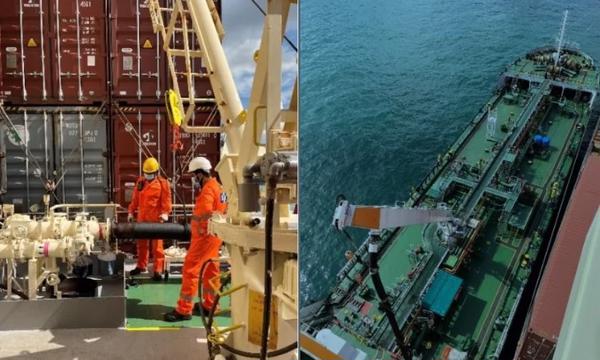ABS says drop-in biofuels can improve a vessel’s CII rating significantly
Drop-in biofuels can immediately improve a vessel’s Carbon Intensity Indicator (CII) rating “regardless of whether it was diesel, methanol or LNG-fueled,” says the American Bureau of Shipping (ABS).
 PHOTO: Ocean Network Express (ONE) recently tested a biofuel blend as part of a pilot project that aims to set guidelines on the quality, quantity and emissions reduction potentials of renewable fuels. ONE
PHOTO: Ocean Network Express (ONE) recently tested a biofuel blend as part of a pilot project that aims to set guidelines on the quality, quantity and emissions reduction potentials of renewable fuels. ONE
DNV defines the CII as “a measure of how efficiently a ship transports goods or passengers and is given in grams of CO2 emitted per cargo-carrying capacity and nautical mile.”
New research from ABS this year suggests that fuel blends with 30% biodiesel can improve a heavy fuel oil-powered vessel’s CII rating from D to A.
A methanol-fuelled vessel’s C rating could improve to A by blending in 30% of bio-methanol, and the same bio-based blend ratio can take a LNG-propelled vessel from a B to an A rating.
“Drop-in biofuels are a powerful new tool for shipowners and operators to accelerate fleet decarbonization and improve their CII trajectory today,” ABS senior vice president Vassilios Kroustallis told marine industry leaders in Cyprus.
Shipowners have increasinly been exploring biofuels as a path to reducing their fleets' near-term carbon emissions. These fuels can typically be dropped into conventional fossil fuels in varying blend ratios, and don't require engine retrofits to work.
Oil supermajor Shell recently released its Energy Transition Progress Report 2022. According to the report, the company claims to have blended around 9.5 billion litres of biofuels – around 6% of the global biofuel consumption – into its fuels in 2022, up from 9.1 billion litres in the prior year.
By Tuhin Roy
Please get in touch with comments or additional info to news@engine.online





